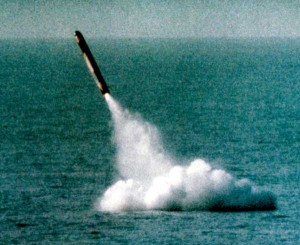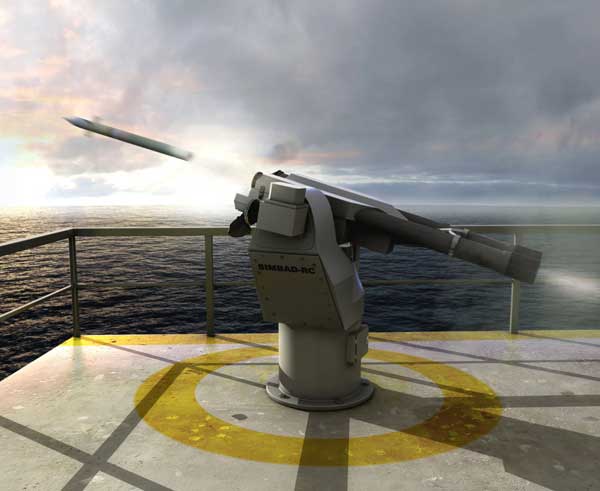Industrial Partnership
Building on 50 years of successful cooperation
MILAN has been manufactured under licence in India by BDL for some 50 years and represents the very foundations of MBDA’s Make in India strategy which has long been the company’s focus. As a worthy successor to this weapon (the anti-tank system currently in service with the Indian and French Armies and that has been sold to 40 other armies around the world) and drawing on experiences gained from recent conflicts which have shown that delivering effects without collateral damage is a major operational requirement, MBDA has been developing MMP.
ATAM has been delivered to India to equip the HAL weaponised version of the Advanced Light Helicopter, the ALH Rudra.
MMP is a vital addition to MBDA’s range of battlefield systems and features both “man in the loop” and “fire and forget” capabilities. It can be fired from confined spaces and against non-line of sight targets. Suitable for a wide range of battlefield targets (from tanks to infrastructures) and platforms (from portable firing posts to vehicles and army aviation platforms), MMP’s architecture and technologies position the 4km range missile well ahead of the competition. These advantages have already been recognised, with the result that a contract was placed in early December 2013 for the French army. The company is discussing with India the possibility of a major joint project to further cement the Make in India policy, a project that would see a co-development of a future fifth generation weapon based on MMP but designed to meet India’s specific operational parameters such as range, launch platform and warhead type.
PARS 3 LR is being delivered to the German Army to provide its Tiger helicopters with the capability of targeting and defeating a wide range of mobile and stationary ground targets from latest generation armour-protected vehicles to bunkers with pinpoint accuracy. For pilot safety, the fire-and-forget missiles, once launched, navigate autonomously to their respective targets without requiring further input from the gunner thereby allowing the helicopter to quit its position should there be a danger. For India’s ALH Rudra, MBDA has sourced an Indian partner to develop a special twin launcher which will be displayed at the exhibition.
ATAM has been delivered to India to equip the HAL weaponised version of the Advanced Light Helicopter, the ALH Rudra. The system is based on two launchers each deploying two MBDA MISTRAL missiles. Given the wide range of roles that the Rudra will have to undertake, ATAM will provide the helicopter’s crew with a weapon that is not only easy to use but one that can be operated in the whole flight envelope from nap of the earth to 15,000ft and at flight speeds from hovering to up to 200 knots. The same system is currently undergoing integration on the LCH platform also manufactured by HAL.
EXOCET probably ranks as the world’s best known anti-ship missile. It is certainly well known in India where the submarine variant, SM39, has been delivered to the Indian Navy to arm its Scorpene submarines (Project 75).
Operational Sovereignty
Helping India advance and protect its national interests
Supporting almost 90% of global trade, the world’s oceans, territorial seas, coastal areas and estuaries are the arterial lifeblood of today’s trading system. They are also the source of valuable mineral and fish resources whose increasing scarcity is linked to ever growing competition over their ownership, access and control. Sea power or command of the sea means different things to different nations and recent developments have seen navies around the world adjusting to their new strategic environments and peacetime missions ranging from sovereignty operations and patrols to new challenges such as those posed by terrorism, piracy and even organised crime. Certainly there has been a growing recognition of the role navies can play in taking control of the littoral environment. Covering both blue and brown water operations, MBDA can offer a range of systems ideally suited to India’s specific requirements.
EXOCET probably ranks as the world’s best known anti-ship missile. It is certainly well known in India where the submarine variant, SM39, has been delivered to the Indian Navy to arm its Scorpene submarines (Project 75). The AM39 version can be launched from Maritime Patrol Aircraft, strike fighters such as the Rafale as well as medium to heavyweight helicopters. Features such as low signature, sea-skimming flight at very low altitudes, late seeker activation, enhanced target discrimination and ECCM combine to make this a redoubtable weapon indeed.
 In its Block2 Mod2 latest evolution it is now fully compliant with the latest generation of aircraft platforms. The MM40 Block 3 variant within the EXOCET family, is a 200+ km class weapon (the actual figure for this very long range anti-ship weapon is classified) suitable for launch from ships or from coastal batteries. Already in service, this latest generation EXOCET features 3D waypoints, low sea-skimming flight profile and the ability to strike coastal land targets as well as ships.
In its Block2 Mod2 latest evolution it is now fully compliant with the latest generation of aircraft platforms. The MM40 Block 3 variant within the EXOCET family, is a 200+ km class weapon (the actual figure for this very long range anti-ship weapon is classified) suitable for launch from ships or from coastal batteries. Already in service, this latest generation EXOCET features 3D waypoints, low sea-skimming flight profile and the ability to strike coastal land targets as well as ships.
MARTE is a family of fixed and rotary wing and ship-launched anti-ship missile weapon systems designed to meet operational requirements in complex littoral environments and blue water scenarios. At DEFEXPO 2016 MBDA is displaying MARTE ER, the latest addition to the family. The high sub-sonic MARTE ER is equipped with a turbo-jet engine giving it a range of well over 120km, thus enabling it to engage enemy vessels well over the horizon. Other enhancements include an optimized terminal guidance system and 4D waypoints including altitude and time for simultaneous time on target attack. MARTE ER offers rotary and fixed wing aircraft, ships and land based coastal defence systems a significant operational advantage.
For the first time in India, MBDA will be displaying its NCM (Naval Cruise Missile) that is currently finalising its development in readiness for it to be declared operational on the French Navy’s Barracuda nuclear powered submarine in 2018.
During a series of joint MBDA-Airbus Military trials carried out in 2013, a MARTE MK2/S instrumented missile was successfully released from the under wing pylon of a CN295 Maritime Patrol Aircraft, thereby validating the missile’s aerodynamic integration on the platform. MARTE MK2 and MARTE ER share a high degree of commonality providing the user not only exceptional operational flexibility but also advantages in terms of life cycle costs.
For the first time in India, MBDA will be displaying its NCM (Naval Cruise Missile) that is currently finalising its development in readiness for it to be declared operational on the French Navy’s Barracuda nuclear powered submarine in 2018. This very long-range, surface attack stand-off cruise missile is designed to attack deep into enemy territory. Given its range, it will provide navies and surface and sub-surface vessels with the ability to maintain a prolonged dissuasive force in theatre unlike an aircraft launched missile.
Drawing on elements of the combat-proven SCALP/Storm Shadow and weighing some 1,400 kg with an overall length of around 6.50m and a diameter of 0.5m, NCM offers destructive power against key infrastructure targets. Maximum precision and minimum collateral damage are assured thanks to the weapon’s guidance system which combines inertial guidance, terrain matching, and GPS with an imaging infrared seeker to achieve metric accuracies in the terminal phase. The missile has already been tested for both surface ship and submarine launch (vertically launched for the former and via the torpedo tubes for the latter with the submarine version housed in a special sea to air transition container). Surface ship operational capability was declared in May 2015 after a series of test firings had been successfully completed.





